Chehel Sotoun Palace: Iran's Timeless Marvel
Isfahan is known for being a city characterized by numerous exquisite gardens, historic bridges, and palaces. The majority of these landmarks boast a history spanning at least a century.
As one of the most renowned Isfahan attractions, the Chehel Sotoun Palace stands as a testament to the grandeur of Persian architecture and the rich tapestry of history it holds. Its significance transcends time, being honored with the prestigious title of a UNESCO World Heritage Site, a testament to its profound cultural and historical importance.
Chehel Sotoun Historical Background
Chehel Sotoun Palace, located in Isfahan, Iran, is a cherished piece of Iran's past. Its importance was recognized back in 1310 when it became a national monument.
In a remarkable turn, the year 2011 witnessed its induction among the select nine world gardens to be enshrined on the UNESCO World Heritage List. As we dive into its history across various epochs, the narrative unfurls before us.
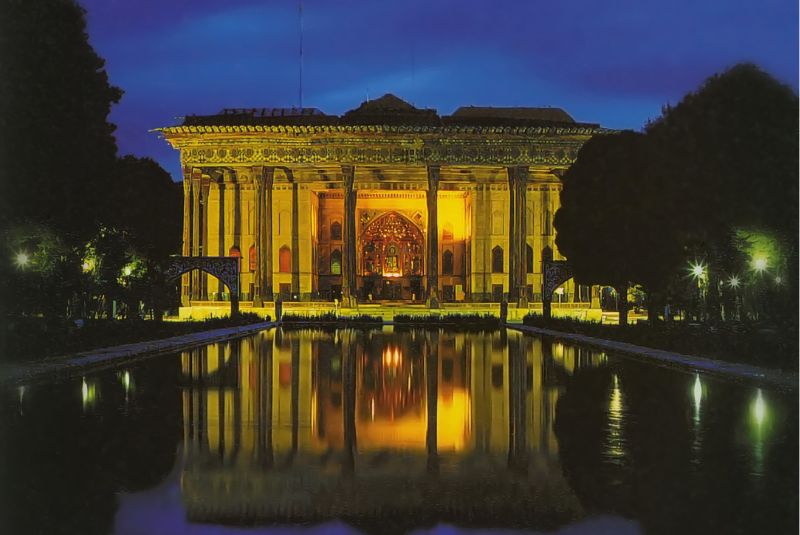
Shah Abbas the Great's Time
In the Safavid period, Isfahan was the capital, and the Chehel Sotoun Palace was born during the reign of Shah Abbas I. He wanted a place to relax, away from his official duties. This led to the creation of a beautiful mansion in the Jahan Nama garden, known as “Chehel Sotoun" today.
Designed as a royal haven, its purpose evolved to accommodate both intimate repose and grand affairs. Beyond its intimate origins, Chehel Sotoun resonated with history, hosting regal gatherings and diplomatic rendezvous. Notably, the mansion bore witness to Shah Abbas I's grand Nowruz celebration in the 23rd year of his reign, cementing its distinct role during his era.
Shifting Epochs
As times changed, so did the palace's role. Shah Abbas II's era saw it flourish further. Talented architects and artists worked on it, making it even more splendid.
Sadly, during the Qajar rule, the palace faced neglect and destruction. Valuable artwork and murals suffered, and its grandeur dwindled.
A Revival and New Chapter
The Pahlavi era brought restoration. Skilled hands revived its beauty based on old photographs. The palace was reborn, transformed into a museum. Today, it stands proud, offering a journey through time, showcasing Iran's history in its corridors and artworks.
Chehel Sotoun Now
As you step into Chehel Sotoun, you're stepping into Iran's history. Walk through its halls, admire its art, and feel the whispers of the past. It's not just a palace; it's a connection to a rich heritage, a story of survival and revival.
Why is it called Chehel Sotoun?
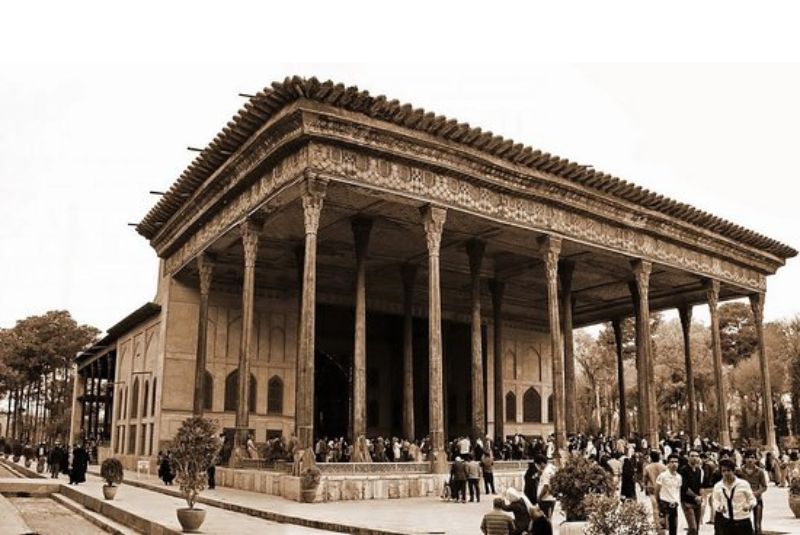
The name "Chehel Sotoun" holds a fascinating tale behind its intriguing facade. "Chehel" translates to "forty" in Persian, and this name has its roots embedded in the palace's unique architectural design.
The entrance pavilion of the palace stands adorned with twenty slender wooden columns. However, when the reflection of these columns dances upon the waters of the central fountain, the illusion takes form – they appear to multiply into a total of forty columns. This optical illusion adds an enchanting element to the palace's visual allure, subtly playing with the observer's perception.
Beyond this architectural marvel, there's a cultural significance attached to the number forty. In the era when Chehel Sotoun was constructed, the number forty symbolized greatness, abundance, and magnificence. It wasn't merely a numerical value; it bore a deeper connotation, representing the grandeur and vastness that the palace encapsulated.
The Architecture of Chehel Sotoun

Chehelsotoun Palace boasts a big porch on its east side, measuring 38 meters long, 14 meters high, and 17 meters wide. The palace's foundation is composed of sturdy bricks, while its striking columns are meticulously crafted from pine and plane wood.
The exquisite details are brought to life through vibrant tilework, reflecting a harmonious fusion of Iranian, French, and Chinese architectural influences. Notably, skilled artists of the time, including Reza Abbasi and Aliquli Jabbadar, contributed their talents to the intricate paintings and designs, elevating the palace to a remarkable testament of historical craftsmanship and cultural significance.
Exploring the Chehel Sotoun Palace
A journey through the Chehel Sotoun complex exposes a captivating array of sections, making it a cornerstone of Isfahan's attractions:
Chehel Sotoun Museum Garden
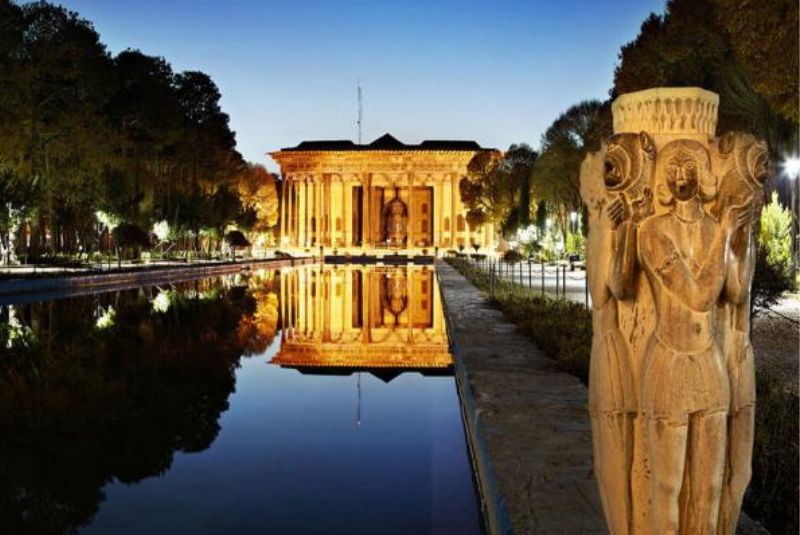
The garden spans about 2100 square meters and boasts three entrances, with the main entrance located in the east. Upon entering, a large and enchanting pool comes into view, situated in front of the main building. The garden features towering trees such as Iranian pine, sycamore, elm, and black maple, all aligned along a pathway that leads to the palace. Although the garden was originally larger, it gradually diminished in size due to various reasons over time. The pool is divided into two parts: one positioned in front of the palace, and the other situated behind it. The front pool is so expansive that it flawlessly reflects the palace's beauty.
| Related: Persian Garden | A Piece of Paradise in Iran
Columned Porch
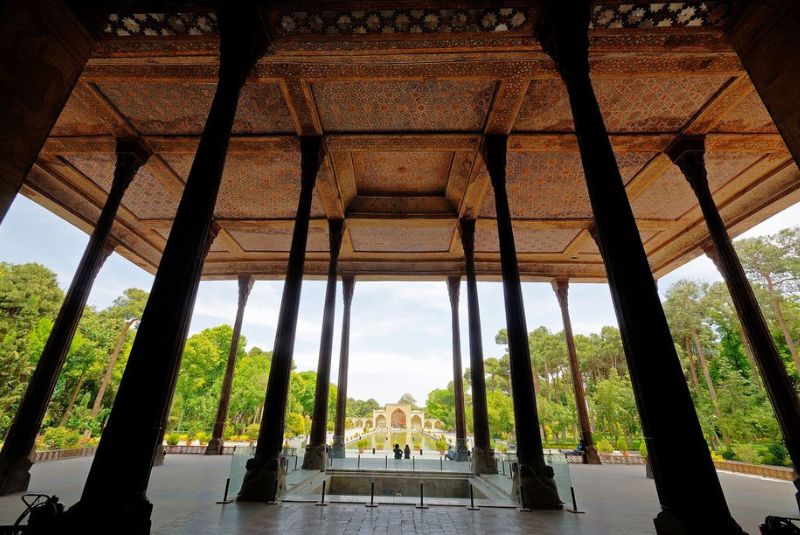
As you approach the palace, your attention will be drawn to the majestic columns of the porch. The porch boasts a total of 18 columns, showcasing a distinctive hallmark of Safavid architecture. The name "Chehel Sotoun," in fact, originates from this very porch. These columns are crafted from pine or plantain tree trunks. Although they were once mirrored in the past, they are now covered for protection. A marble basin is positioned amidst the columns, each of which is supported by the head of a stone lion. While the stone lions once spouted water from their mouths, they no longer do so. The ceiling of the porch stands out as a highlight, adorned with captivating paintings that remain visible.
The Mirror Hall
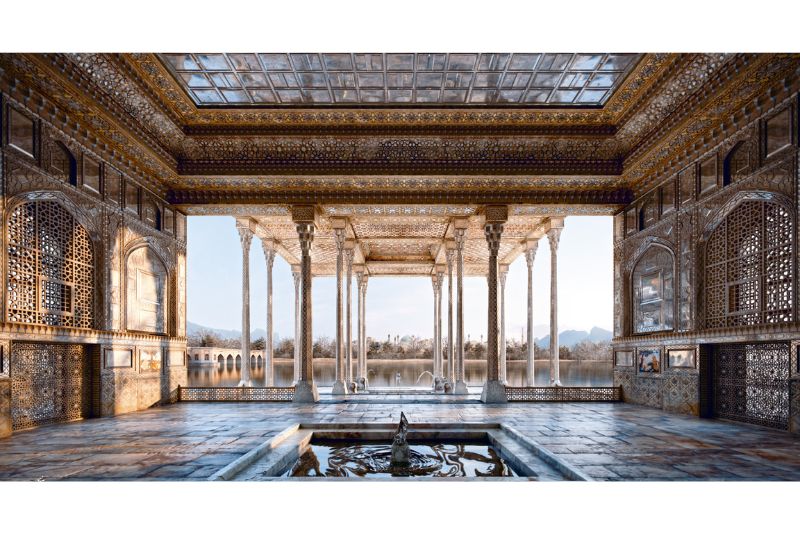
Differing from the mirror hall in the Golestan Palace in Tehran, the Hall of Mirrors within Chehel Sotoun stands out in its own right. Located behind the porch, this hall is adorned with mirrors that create an illusion of infinite reflections. The ceiling is embellished with wooden frames and intricate geometric designs, complemented by an inscription dating back to the era of Shah Abbas II.
Shah-Neshin

The Shah-Neshin, a modest alcove situated behind the Hall of Mirrors, is adorned with an array of small mirrors and gilded accents. Stories recounting Qajar kings decorating its walls with portraits, now faded with time, whisper tales of a regal legacy.
Ashraf Hall
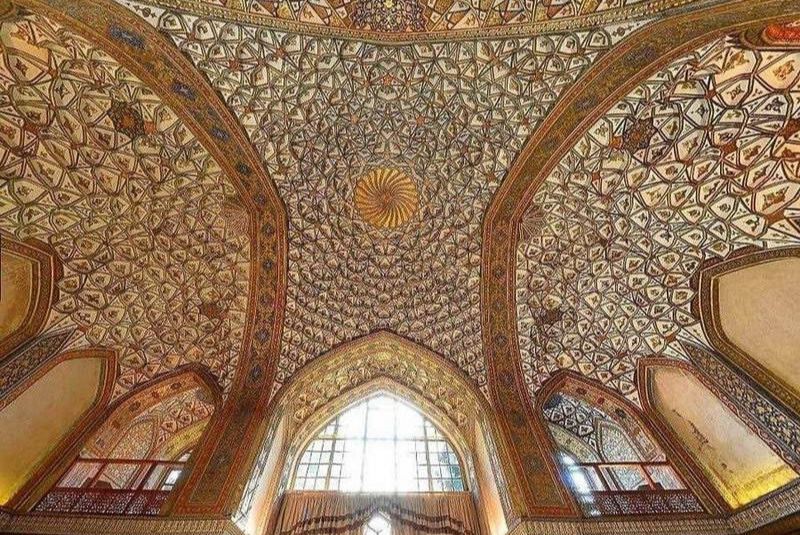
Finally, the Ashraf Hall, also known as the Central Hall, captivates attention as the pinnacle of Chehel Sotoun Palace. At the heart of this hall, six grand oil paintings depict significant historical events, contributing a vibrant narrative to its grandeur. Once a space reserved for guests and ceremonies, this hall resonates with the echoes of history.
| Suggestion: Saad Abad Historical Complex
Chehel Sotoun Palace Artworks
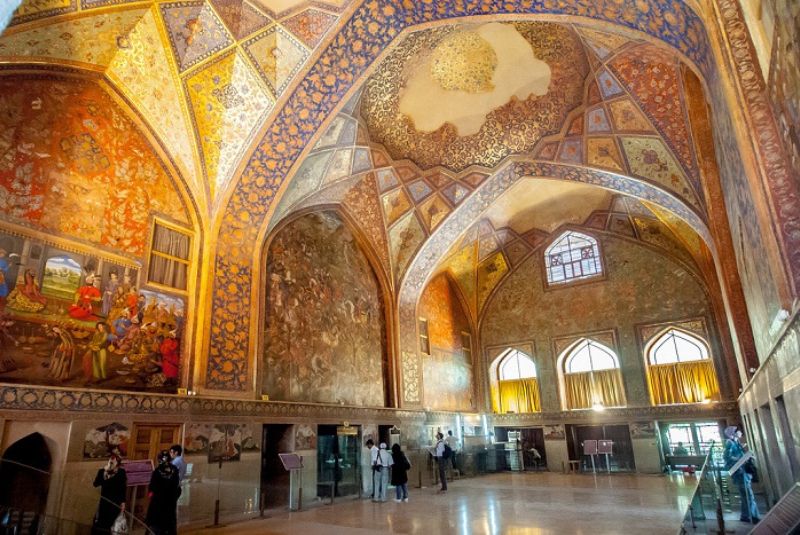
Chehel Sotoun Museum in Isfahan offers a captivating collection of historical treasures, including the Abgineh Collection, carpets, Kufic Manuscripts of the Quran, coins, stone inscriptions, pottery collection, historical works from Islamic and Safavid eras, and ancient carpets. Each piece whispers stories of bygone times and artistic legacies.
The Paintings in Chehel Sotoun Palace
The main hall of Chehel Sotoun Palace comes alive with a gallery of six paintings, each offering a window into the past. The canvas captures pivotal moments, some hailing from the Qajar era, divided into three panels on both the west and east sides. Let's step into the narratives unfurling before our eyes:
West Side Paintings (Right to Left)
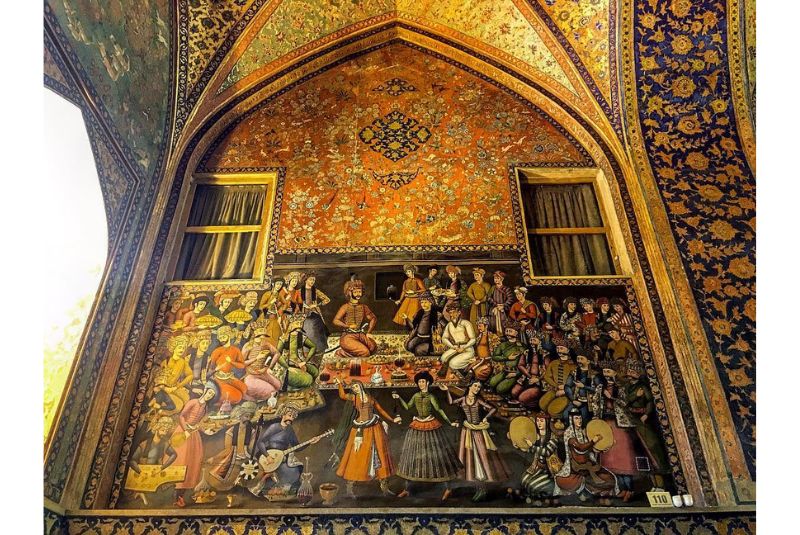
Starting from the right, the first painting reveals Shah Abbas I extending a warm welcome to Wali Mohammad Khan, the ruler of Turkestan. The second canvas portrays the legendary Shah Ismail I amidst the Battle of Chaldoran. The third artwork brings to life the historical meeting of King Tahmasab I and King Humayun of India.
| Read more: Abyaz Palace | The Ethnological Museum of Tehran
East Side Paintings (Right to Left)
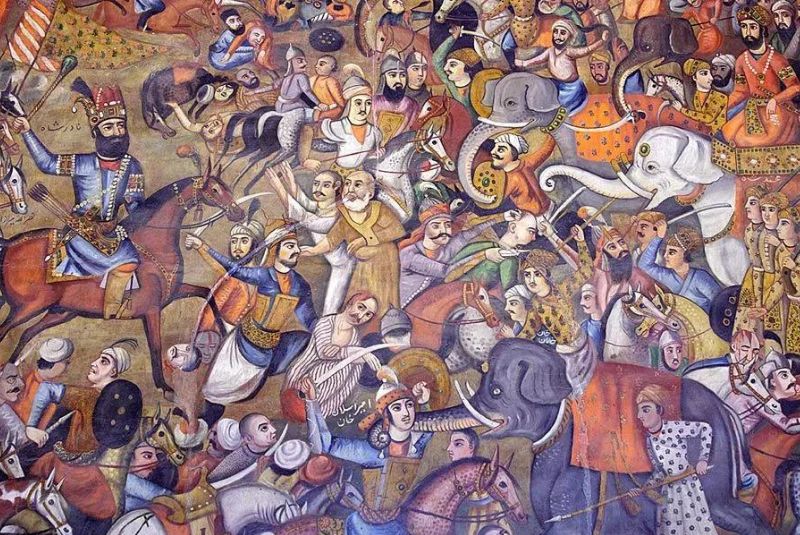
On the east side, our journey begins with a painting of Shah Ismail I engaged in the battle against Shibak Khan Uzbek, marking the Battle of Merv. The following canvas thrusts us into the Battle of Karnal, where Nader Shah Afshar's resolute presence dominates. The last painting on this side depicts the moment when Shah Abbas II graciously welcomes Nader Mohammad Khan, the Amir of Turkestan, from the Ashtar Khan dynasty.
These paintings aren't just strokes of colors; they're portals to a time when history was in the making. As you gaze upon each canvas, stories of rulers, battles, and diplomatic exchanges unfold, connecting you to a tapestry of bygone moments and remarkable leaders.
Sightseeing Places Around Chehel Sotoun
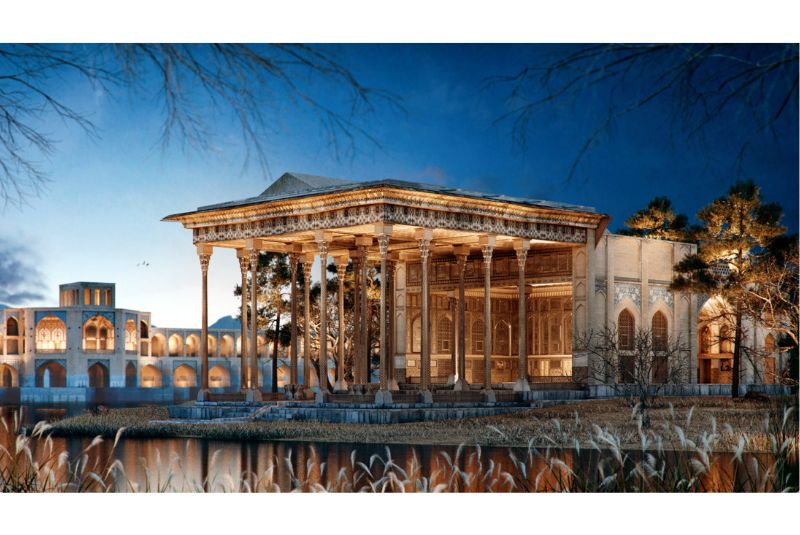
Explore the enchanting surroundings of Chehel Sotoun Palace, where history intertwines with beauty. Nearby attractions include:
- Naqsh-e Jahan Square
- Shah Mosque
- Sheikh Lotfollah Mosque
- Ali Qapu Palace
- Isfahan Grand Bazaar
- Isfahan Museum of Natural History
- Hash Behesht Garden
Best Time to Visit Chehel Sotoun Garden
The ideal time to experience Chehel Sotoun Palace's magic is during spring and fall, when the weather is pleasant. The palace welcomes visitors from 9:00 AM until 4:00 PM, every day except holidays.
How to get to the Palace
Chehel Sotoun Palace transportation is convenient and offers various options based on your preference:
- Metro: If you opt for the Isfahan metro, simply get off at Maidan Imam Hossein station. From there, a leisurely walk will lead you to Chehel Sotoun in the east of Chahar Bagh Street.
- Bus: Choose the Imam Hossein Square-Laleh Square bus and get off at Bagh Goldeste Station. From here, a short walk leads you to the palace, letting you experience the local atmosphere.
- Private Car or Taxi: If you're traveling by private car or taxi, utilize Google Maps to find your way to Chehel Sotoun Palace's location. Public parking lots around the palace provide ample space.
Restaurants Around Chehel Sotoun Palace
After your palace visit, treat your taste buds to a variety of flavors at nearby eateries. Indulge in both Iranian and international cuisines, embracing the culinary delights of Isfahan. As you take a relaxing stroll, discover the following dining options just steps away from the palace:
- Shahrzad Restaurant and Cafe
- Aseman Café
- Talar-e Ashpazkhaneh Restaurant
- Gheisarieh Icecream Shop
- Goharshad Café
- Chehel sotoun Traditional Tea House
| Discover: Best Restaurants in Isfahan
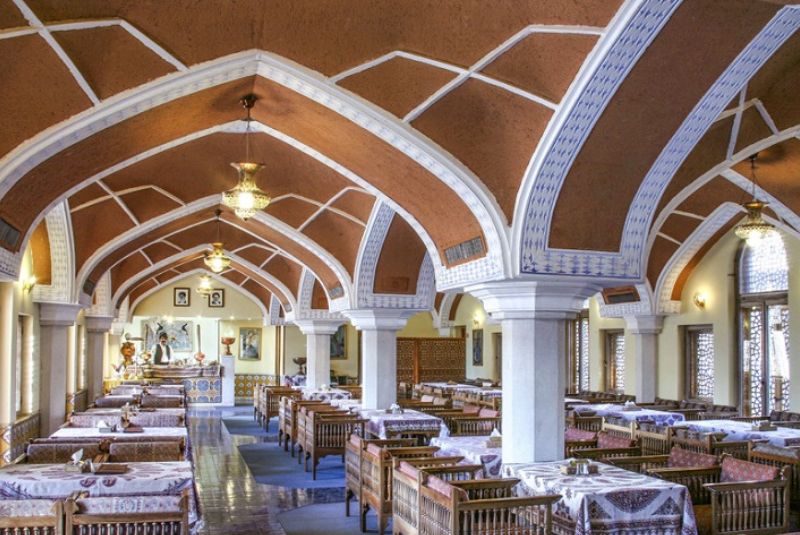
Hotels Near Chehel Sotoun Palace
For a comfortable stay that complements your visit, consider these nearby hotels, ensuring a seamless experience throughout your time in Isfahan:
- Abbasi Hotel
- Jamshid Hotel
- Atigh Traditional Hotel
- Partikan Hotel
- Safir Hotel
| Related: Best Hotels in Isfahan to Stay
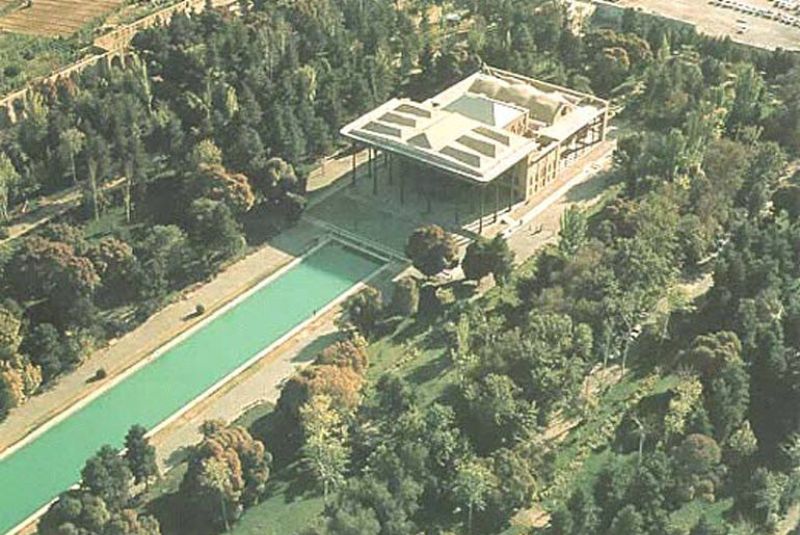
Bottom Line
We invite you to walk around Chehel Sotoun Palace, where every wall, every painting, and every pillar tells a story. Wander through its magnificent gardens, stand beneath the intricate ceilings of the hall of mirrors, and reflect on the pivotal events it witnessed.
Ready to explore Iran's historical marvels? Contact EavarTravel agency to curate a delightful trip to Iran, including an unforgettable visit to Chehel Sotoun Palace.
Share your story!
Comment below and let us know about your Experience.
Your story inspires others!


Comment
Leave a Comment